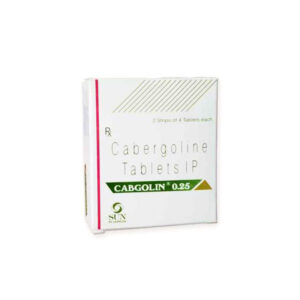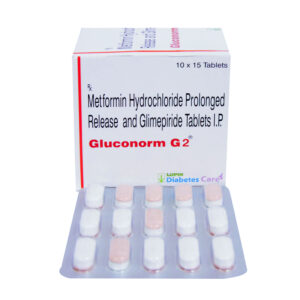Gliclazide Information
What is this drug used for?
• It is used to lower blood sugar in patients with high blood sugar (diabetes).
Possible side effects
Gliclazide may cause side effects. Tell your doctor if any of these symptoms are severe or do not go away:
• Stomach pain or heartburn.
• Upset stomach or throwing up.
• Diarrhea or constipation.
• Back pain.
Some side effects can be serious. If you experience any of these symptoms, call your doctor immediately or get emergency medical treatment:
• Signs of an allergic reaction, like rash; hives; itching; red, swollen, blistered, or peeling skin with or without fever; wheezing; tightness in the chest or throat; trouble breathing, swallowing, or talking; unusual hoarseness; or swelling of the mouth, face, lips, tongue, or throat.
• Signs of a very bad skin reaction (Stevens-Johnson syndrome/toxic epidermal necrolysis) like red, swollen, blistered, or peeling skin (with or without fever); red or irritated eyes; or sores in the mouth, throat, nose, or eyes.
• Signs of low sodium levels like headache, trouble focusing, memory problems, feeling confused, weakness, seizures, or change in balance.
• Signs of kidney problems like unable to pass urine, change in how much urine is passed, blood in the urine, or a big weight gain.
• Chest pain or pressure.
• Shortness of breath, a big weight gain, or swelling in the arms or legs.
• Fever, chills, or sore throat; any unexplained bruising or bleeding; or feeling very tired or weak.
• Headache.
• Cough.
• Joint pain.
• Low mood (depression).
• Low blood sugar can happen. The chance may be raised when this drug is used with other drugs for diabetes. Signs may be dizziness, headache, feeling sleepy or weak, shaking, fast heartbeat, confusion, hunger, or sweating. Call your doctor right away if you have any of these signs. Follow what you have been told to do for low blood sugar. This may include taking glucose tablets, liquid glucose, or some fruit juices.
• Very bad liver problems have happened with this drug. Sometimes, these have been life-threatening. Call your doctor right away if you have signs of liver problems like dark urine, feeling tired, not hungry, upset stomach or stomach pain, light-colored stools, throwing up, or yellow skin or eyes.
• A skin reaction called bullous pemphigoid has happened with drugs like this one. Sometimes, people have had to go to the hospital. Call your doctor right away if you have blisters or if your skin starts to break down.
Medication Safety Issues
High alert medication:
This medication is in a class the Institute for Safe Medication Practices (ISMP) includes among its list of drugs which have a heightened risk of causing significant patient harm when used in error.
Product Availability
Not available in the US
Storage and Stability
Store at 15°C to 30°C (59°F to 86°F).
Adverse Reactions
>10%: Endocrine & metabolic: Hypoglycemia (11% to 12%)
1% to 10%:
Cardiovascular: Hypertension (3% to 4%), angina pectoris (2%), peripheral edema (1%)
Central nervous system: Headache (4% to 5%), dizziness (2%), depression (1% to 2%), insomnia (1% to 2%), neuralgia (≤1%)
Dermatologic: Dermatological disorders (2%), dermatitis (1% to 2%), skin rash (1%; includes maculopapular rash, morbilliform rash), pruritus (≤1%)
Endocrine & metabolic: Hyperglycemia (2%), hyperlipidemia (≤1%), lipid metabolism disorder (≤1%)
Gastrointestinal: Diarrhea (2% to 3%), constipation (1% to 2%), gastroenteritis (1% to 2%), abdominal pain (1%), gastritis (1%), nausea (≤1%)
Genitourinary: Urinary tract infection (3%)
Infection: Viral infection (6% to 8%)
Neuromuscular & skeletal: Back pain (4% to 5%), arthralgia (3% to 4%), asthenia (2% to 3%), arthropathy (2%), myalgia (2%), arthritis (1% to 2%), tendonitis (1%)
Ophthalmic: Conjunctivitis (1%)
Otic: Otitis media (≤1%)
Respiratory: Bronchitis (4% to 5%), rhinitis (4% to 5%), pharyngitis (4%), upper respiratory tract infection (3% to 4%), cough (2%), pneumonia (1% to 2%), sinusitis (1% to 2%)
Frequency not defined:
Endocrine & metabolic: Increased lactate dehydrogenase
Renal: Increased serum creatinine
<1%, postmarketing, and/or case reports: Abnormal lacrimation, acute myocardial infarction, acute pancreatitis, agranulocytosis, albuminuria, anal fissure, anemia, angioedema, anxiety, arteritis, asthma, auditory disturbance, balanitis, bone disease (spine malformation), breast neoplasm (female; benign), bullous rash, bursitis, cardiac failure, carpal tunnel syndrome, cataract, cerebrovascular disease, chest pain, cholestatic jaundice, colitis, confusion, conjunctival hemorrhage, coronary artery disease, cystitis, dermal ulcer, diplopia, disulfiram-like reaction, drug reaction with eosinophilia and systemic symptoms, duodenal ulcer, dyspepsia, dyspnea, eczema, epigastric fullness, epistaxis, erythema of skin, erythrocytopenia, esophagitis, fecal incontinence, fever, flatulence, fungal dermatitis, fungal infection, gastroesophageal reflux disease, gastrointestinal neoplasm (benign), glaucoma, glycosuria, gout, hemolytic anemia, hemorrhoids, hepatitis, hepatomegaly, hypercholesterolemia, hyperkeratosis, hypersensitivity angiitis, hypersensitivity reaction, hypertriglyceridemia, hypoglycemic coma, hyponatremia, hypotension, hypothyroidism, impotence, increased appetite, increased serum alanine aminotransferase, increased serum alkaline phosphatase, increased serum aspartate aminotransferase, increased serum transaminases, increased thirst, infection, leukopenia, lower extremity pain, malaise, mastitis, melena, menstrual disease, nail disease, nephrolithiasis, nervousness, neuropathy, nocturia, onychomycosis, pain, palpitations, pancytopenia, polyuria, prostatic disease, renal cyst, retinopathy, sialorrhea, skeletal pain, Stevens-Johnson syndrome, tachycardia, thrombocytopenia, thrombophlebitis, tinnitus, toothache, toxic epidermal necrolysis, tracheitis, urticaria, vaginitis, vascular disease (vein disorder), visual disturbance, vitreous disorder, vomiting, weight gain, xeroderma, xerophthalmia, xerostomia –






